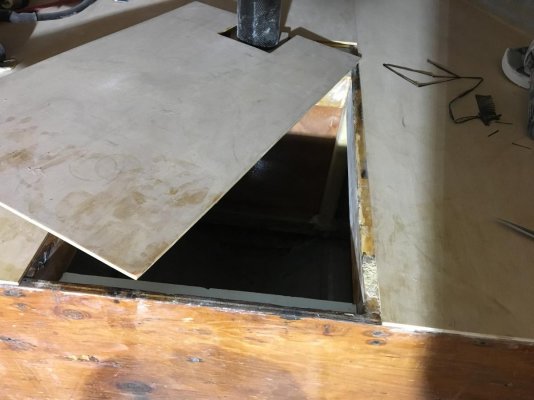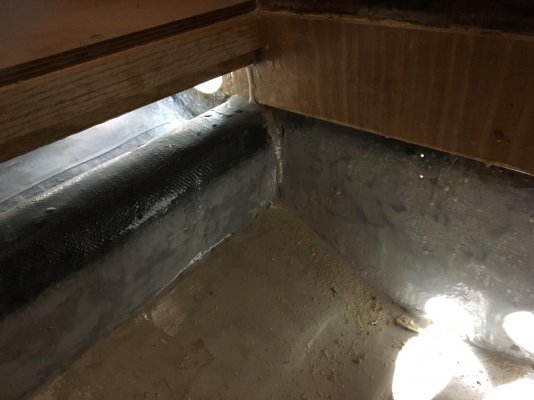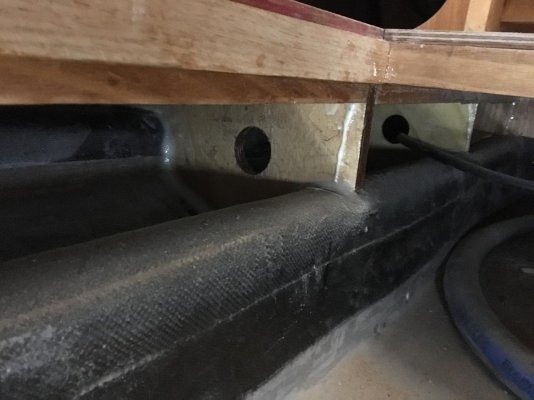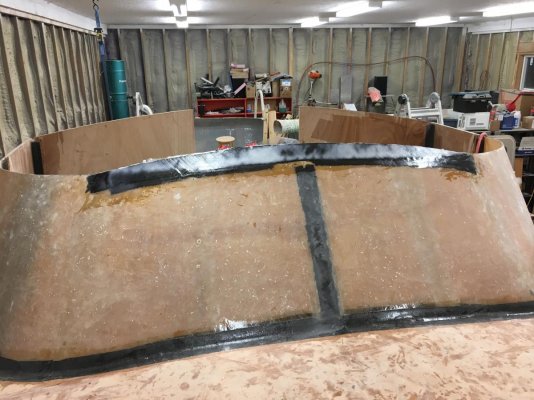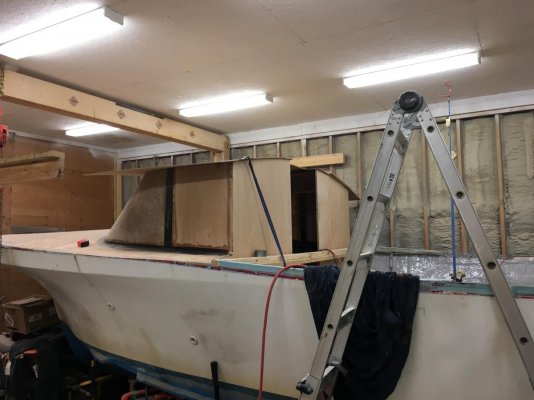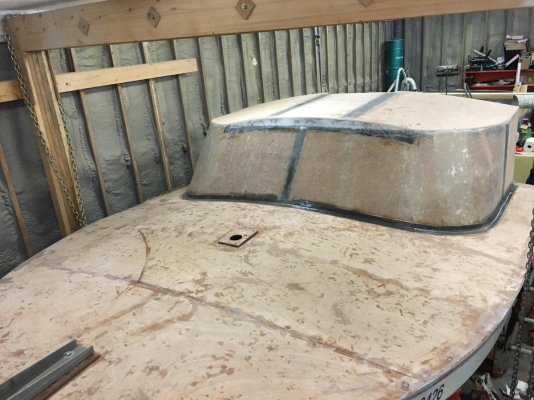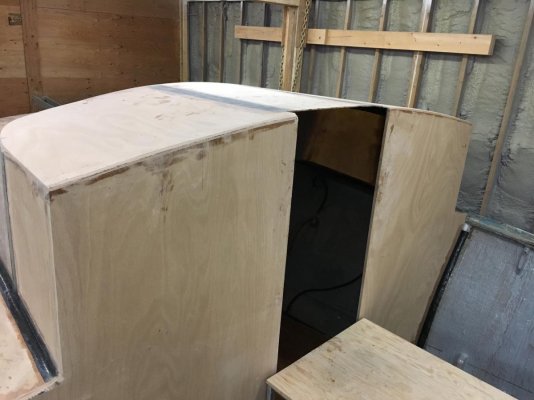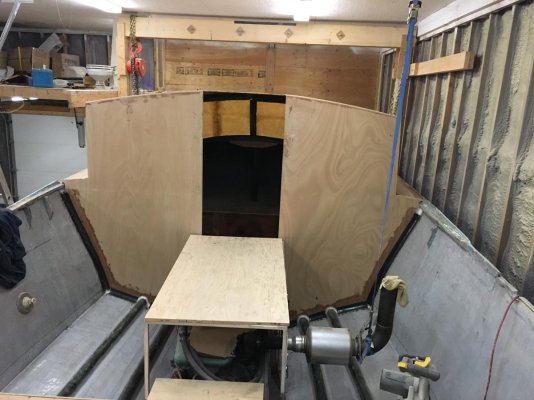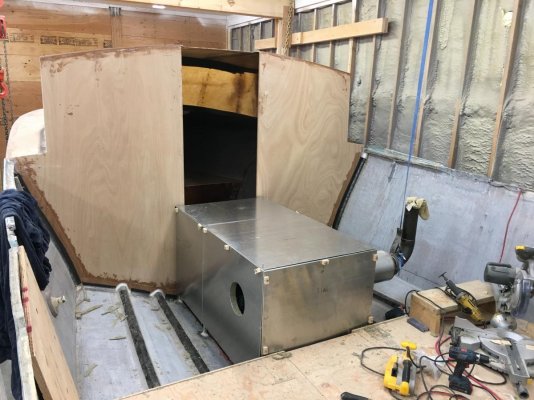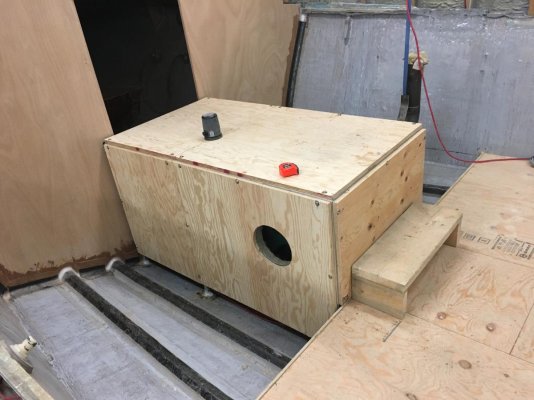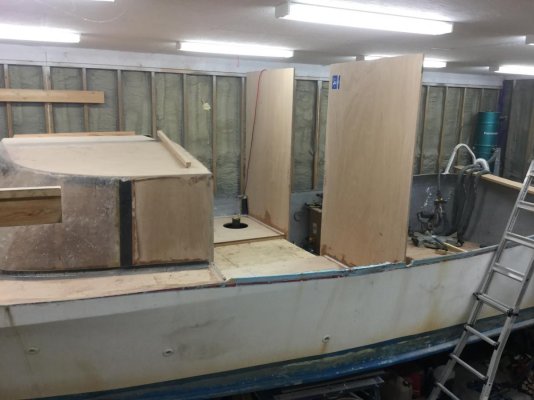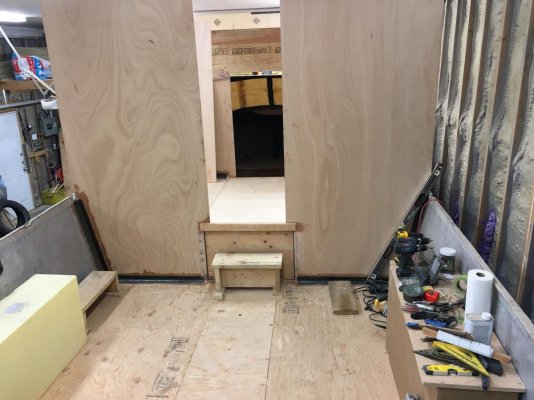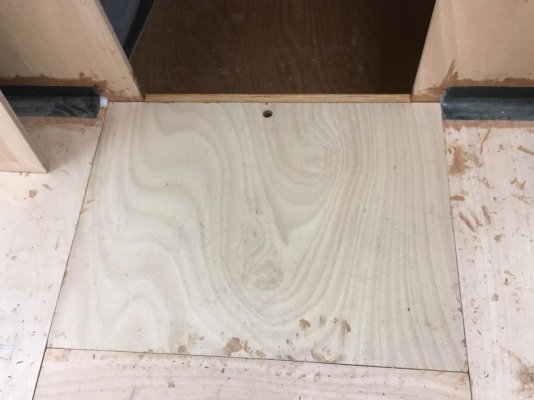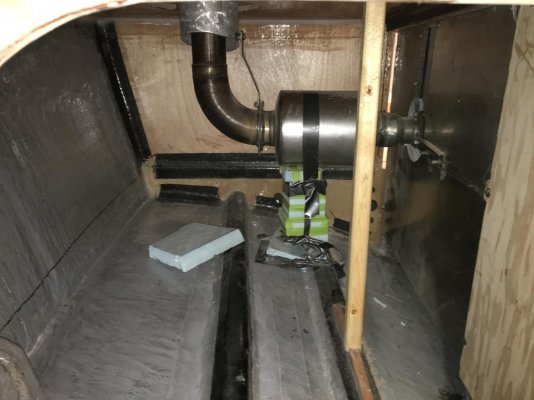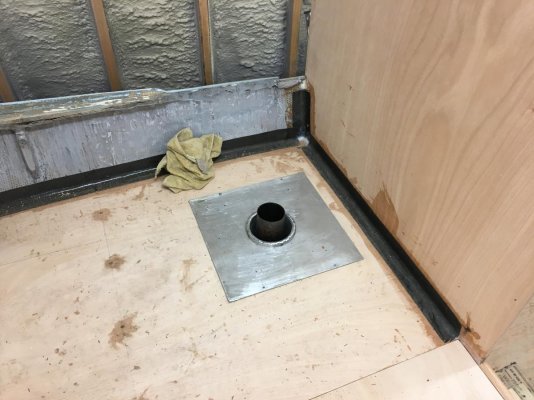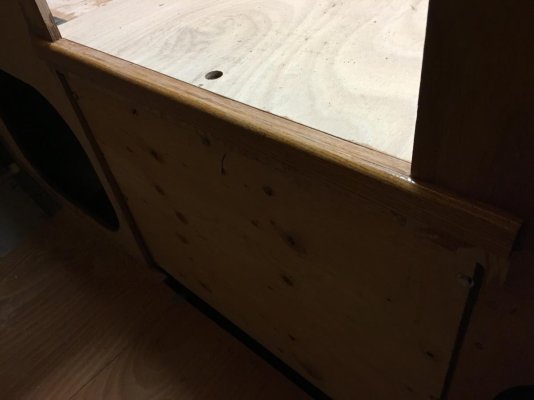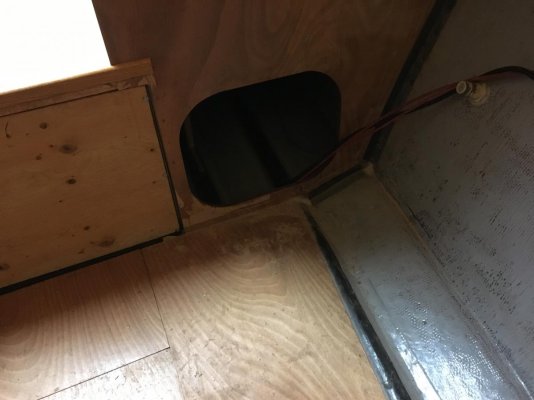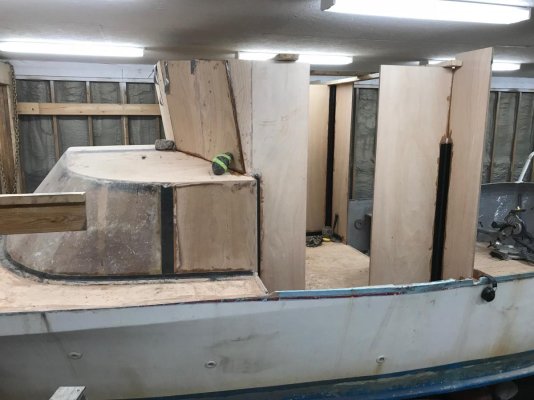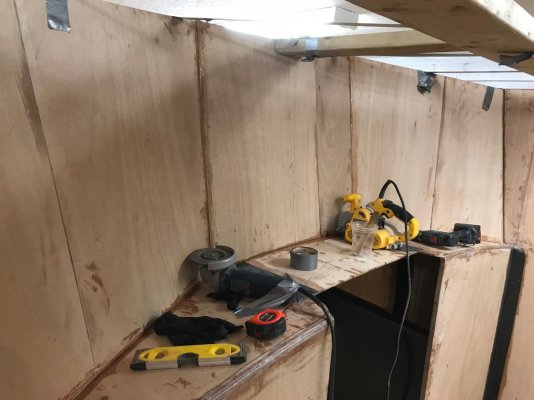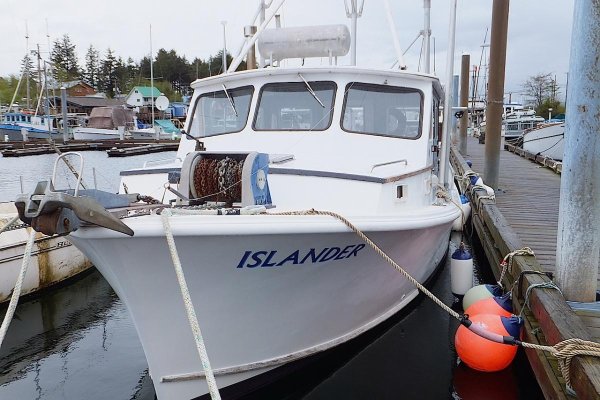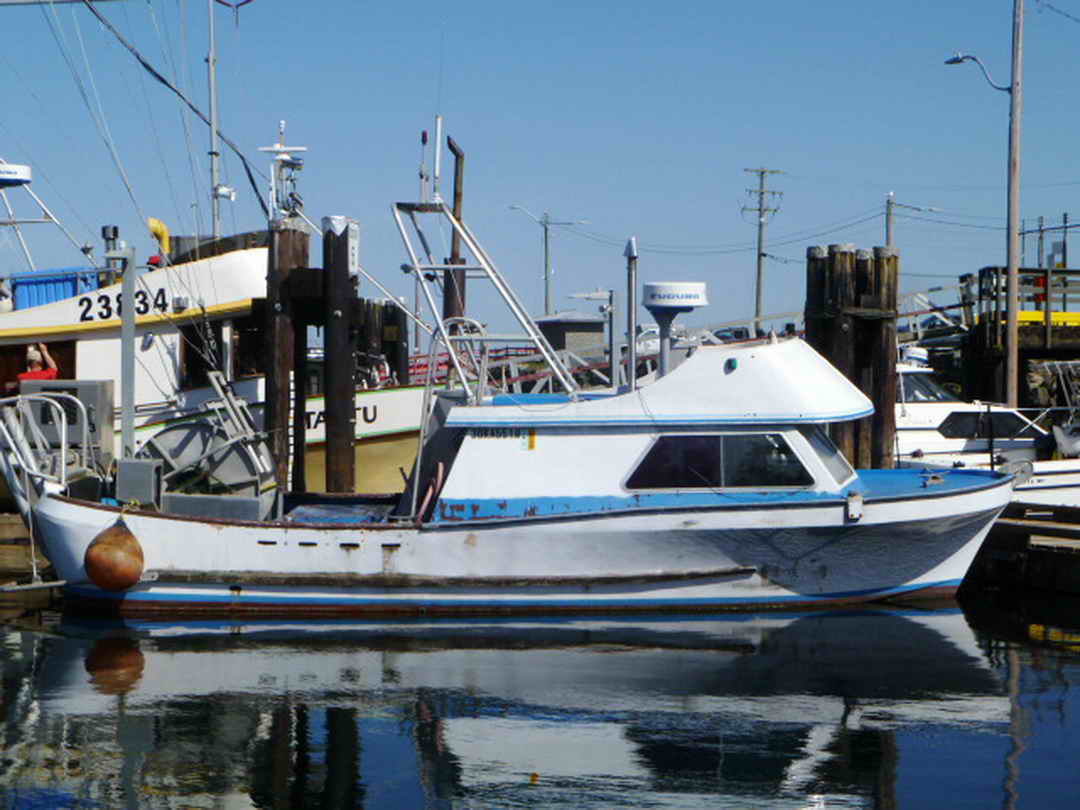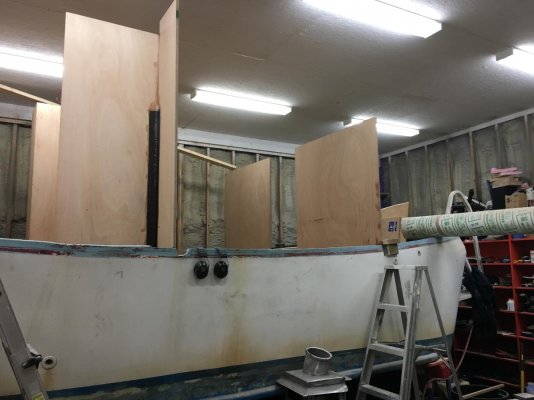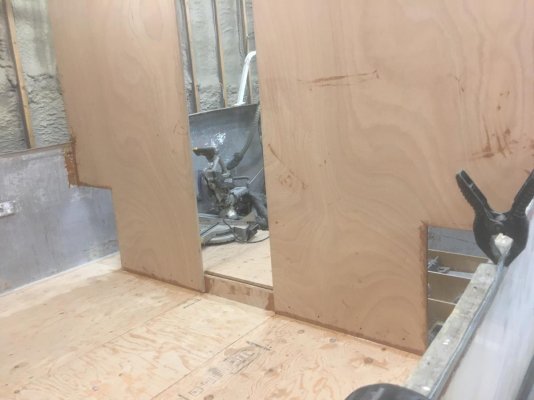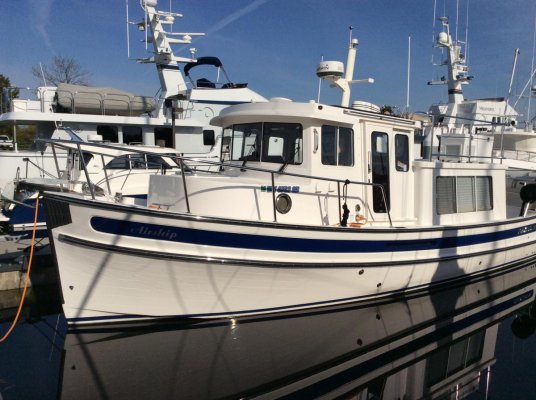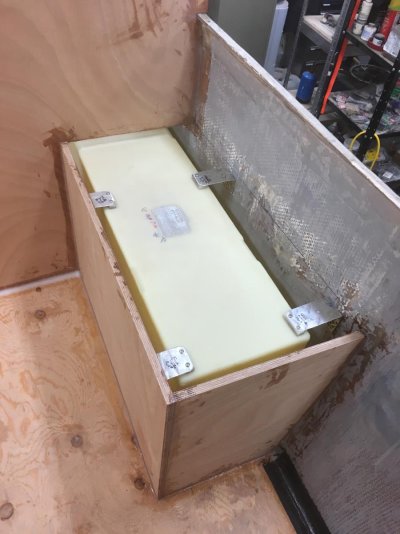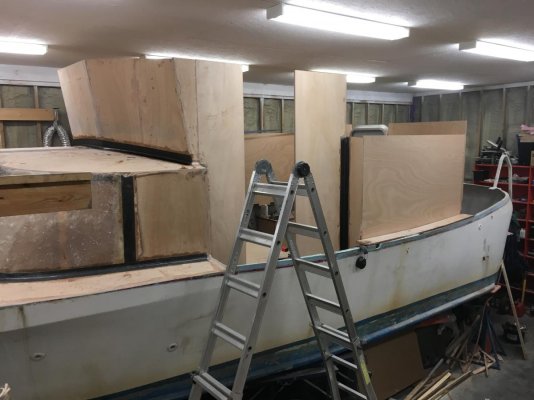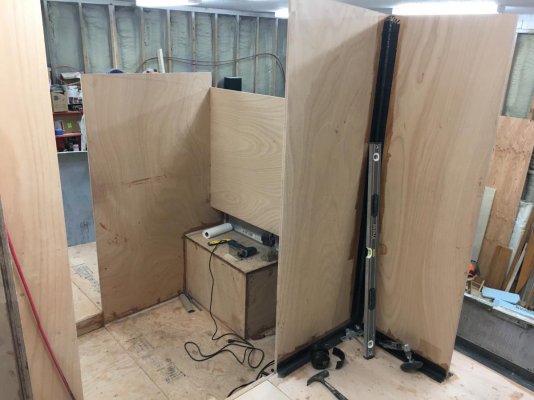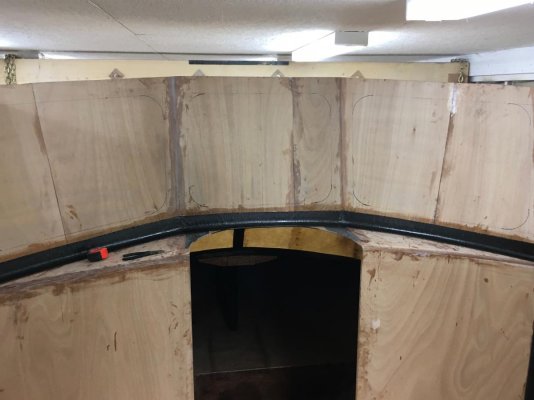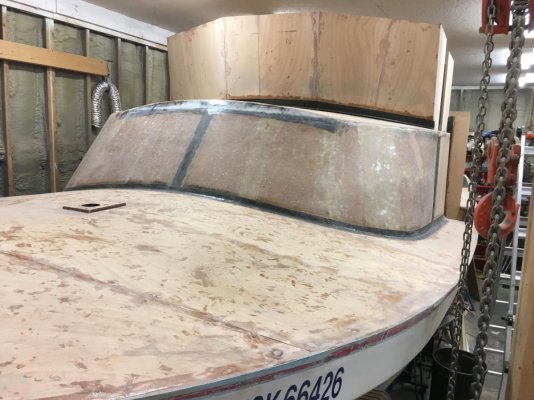Hi Ted, thanks for posting. Yes, I’m concerned about heat, but I plan on having good ventilation. The engine box is open on all four sides along the bottom, and has a large opening for cold fresh air on the intake side. I will have a dedicated ram air duct from the outside (port side) feeding this. On the exhaust side (starboard) there is venting around the turbo outlet exhaust pipe, which then vents upwards through where the muffler is. The muffler will be in a heat shielding box, which is also vented. The Venturi Effect should pull hot air out when the vessel is under way.
Across the boat engine specific venting (port to starboard):
ram air inlet -duct-port compartment-airfeed hole in engine box-engine box-exhaust vent (it’s open around the exhaust pipe)-starboard compartment-vent thru muffler pipe hole (open around the pipe) through floor-muffler box-outside
Additionally, there will be the traditional (and substantial) fore-aft venting, which will draw warm air from beneath the engine box, and also keep the bilge area cool.
Of course, it hasn’t all been built yet.

I do absolutely think about the heat, and I will have temperature sensors in the box, which I will keep a close eye on during sea trials. Should temps get hot, I’ll have to add more venting.
Nice boat Ted. One day I hope to do the ICW loop.
Hi Murray, my workshop is heated, and insulated. I appreciate your concerns.

. At least we aren’t as cold as other parts of North America.


